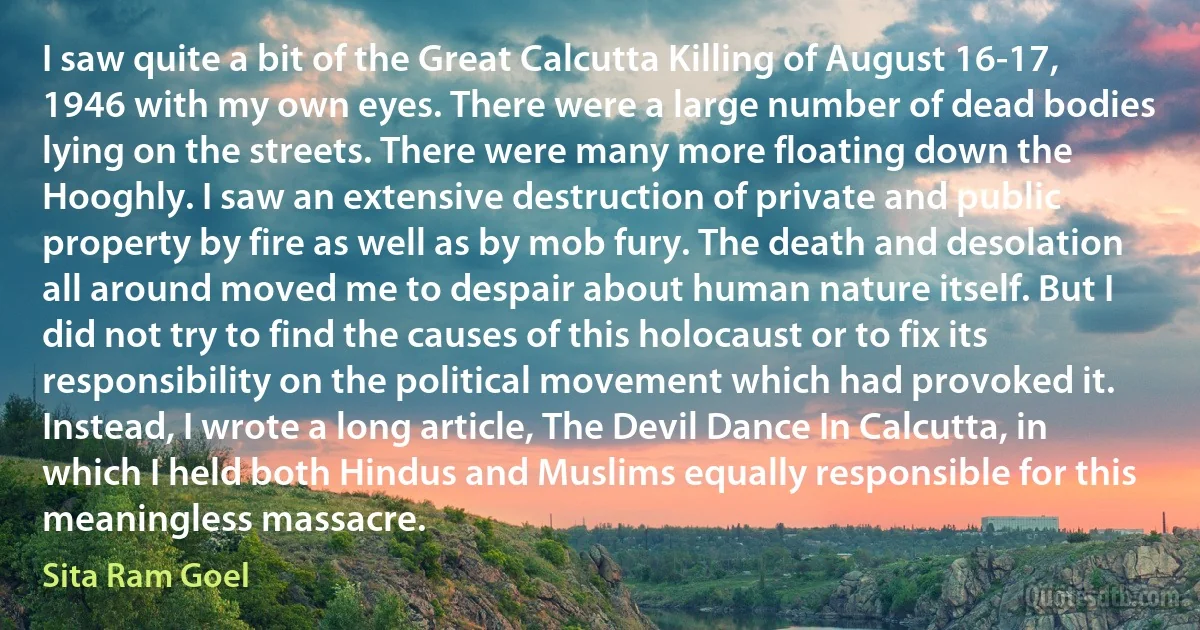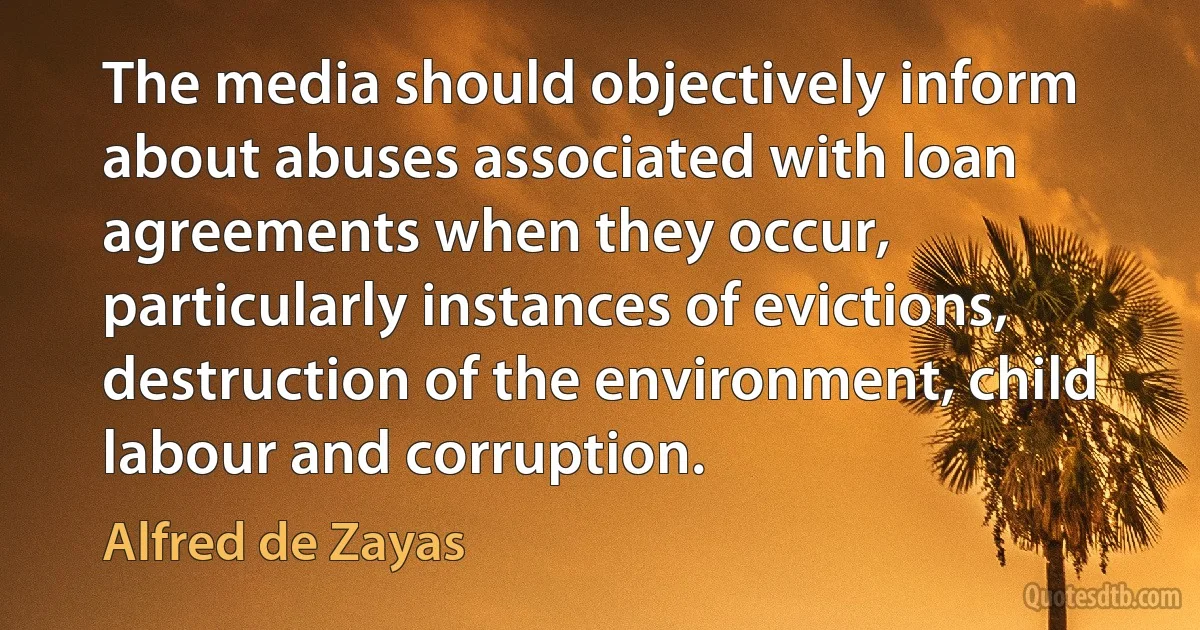Destruction Quotes - page 39
we should facilitate, instead of foolishly and vainly endeavouring to impede, the operations of nature in producing this mortality; and if we dread the too frequent visitation of the horrid form of famine, we should sedulously encourage the other forms of destruction, which we compel nature to use. Instead of recommending cleanliness to the poor, we should encourage contrary habits. In our towns we should make the streets narrower, crowd more people into the houses, and court the return of the plague. In the country, we should build our villages near stagnant pools, and particularly encourage settlements in all marshy and unwholesome situations.*12 But above all, we should reprobate specific remedies for ravaging diseases; and those benevolent, but much mistaken men, who have thought they were doing a service to mankind by projecting schemes for the total extirpation of particular disorders. http://www.econlib.org/library/Malthus/malPlong30.html#dd12 Book IV, Chapter V.

Thomas Malthus
Islamic literary sources provide far more extensive evidence of temple destruction by the Muslim invaders of India in medieval times. They also cover a larger area, from Sinkiang and Transoxiana in the North to Tamil Nadu in the South, and from the Seistan province of present-day Iran in the West to Assam in the East. As we wade through this evidence, we can visualise how this vast area, which was for long the cradle of Hindu culture, came to be literally littered with the ruins of temples and monasteries belonging to all schools of Sanãtana Dharma-Bauddha, Jaina, Šaiva, Šãkta, VaishNava and the rest. Archaeological explorations and excavations in modern times have proved unmistakably that most of the mosques, mazãrs, ziãrats and dargãhs which were built in this area in medieval times, stood on the sites of and were made from the materials of deliberately demolished Hindu monuments.

Sita Ram Goel
Three conclusions can be safely drawn from a study of these 21 inscriptions. Firstly, the destruction of Hindu temples continued throughout the Muslim rule, from the date of its first establishment at Delhi in AD 1192 to its downfall with the death of the Mughal emperor Muhammad Shah in 1748. Secondly, the destruction took place all over India and was undertaken by rulers belonging to all Muslim dynasties, imperial as well as provincial. Thirdly, the destruction had no economic or political motive as has been proposed by Marxist scholars and Muslim apologists; it was inspired by religious zeal and regarded as a pious performance by Muslim kings and commanders, all of whom took considerable pride in it and sought blessing from Allãh and the Prophet. The iconoclasts, it may be added, have been idolised all along as paragons of faith, virtue, justice and generosity. These conclusions become clearer still when we come to evidence from Islamic literary sources.

Sita Ram Goel
Despotism may govern without faith, but liberty cannot. How is it possible that society should escape destruction if the moral tie is not strengthened in proportion as the political tie is relaxed? And what can be done with a people who are their own masters if they are not submissive to the Deity?

Alexis de Tocqueville
World peace is continually threatened by the paranoia of power, as internal and international conflicts plague humanity. Confronted by the danger of weapons of mass destruction, humanity must take effective measures towards disarmament. Albert Einstein warned us: "I know not with what weapons World War III will be fought, but World War IV will be fought with sticks and stones.”.

Alfred de Zayas
I really tried to believe that, but I gotta tell you, the longer you live, the more you look around, the more you realize, something is fucked up. Something is wrong here. War, disease, death, destruction, hunger, filth, poverty, torture, crime, corruption, and the Ice Capades. Something is definitely wrong. This is not good work. If this is the best God can do, I am not impressed. Results like these do not belong on the résumé of a Supreme Being. This is the kind of shit you'd expect from an office temp with a bad attitude.

George Carlin
It was my view that the catastrophe. . . . could have been avoided if Vasilevsky had taken the position he should have. He could have taken a different position. . . . but he didn't do that, and as a result, in my view, he had a hand in the destruction of thousands of Red Army fighters in the Kharkov campaign.

Aleksandr Vasilevsky
A grand absurdity, a great deception, a delusion of momentous proportions based on preposterous notions and on ideas whose time should never have come. Simplicity, grossly distorted and complicated. Insanity, passed off as logic. Grandiose schemes built on falsehoods with the morality of Ponzi and Madoff. Evil described as virtue. Ignorance pawned off as wisdom. Destruction and impoverishment in the name of humanitarianism. Violence, the tool of change. Preventive wars used as a road to peace. Tolerance delivered by government guns. Reactionary views in the guise of progress. An empire replacing the republic. Slavery sold as liberty. Excellence and virtue traded for mediocrity. Socialism to save capitalism. A government out of control, unrestrained by the constitution, the rule of law or morality. Bickering over petty politics as we descend into chaos.

Ron Paul
The elevation of the belief in being white was not achieved through wine tastings and ice cream socials, but rather through the pillaging of life, liberty, labor, and land; through the flaying of backs; the chaining of limbs; the strangling of dissidents; the destruction of families; the rape of mothers; the sale of children; and various other acts meant, first and foremost, to deny you and me the right to secure and govern our own bodies.

Ta-Nehisi Coates
Here, for the first time, I felt an unshakable conviction that no momentary military advantage - even if such could have been calculated to exist - could have justified this stupendous, careless destruction of civilian life and of material values, built up laboriously by human hands over the course of centuries for purposes having nothing to do with war.

George F. Kennan
Capitalism proceeds through creative destruction. What is created is capitalism in a 'new and improved' form - and what is destroyed is self-sustaining capacity, livelihood and dignity of its innumerable and multiplied 'host organisms' into which all of us are drawn/seduced one way or another.

Zygmunt Bauman



